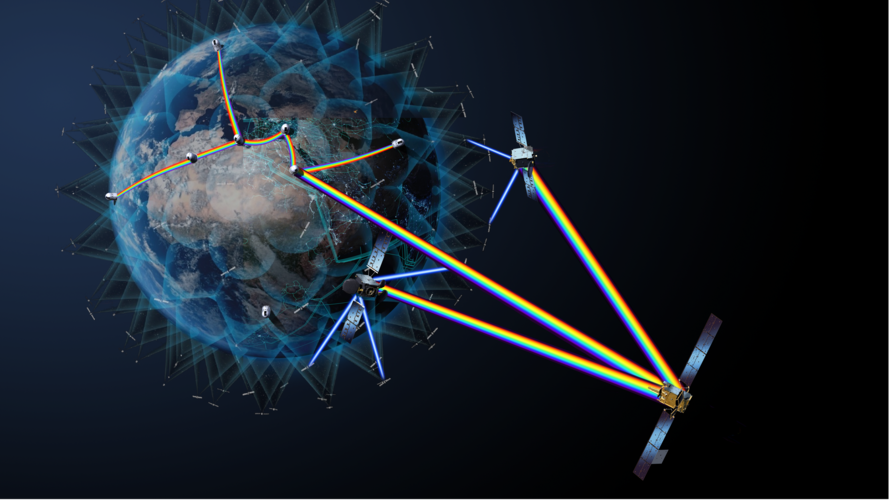Using lasers to communicate helps speed the flow of information to people around the world, as well as improving the privacy of messages.
Demand for ultra-broadband digital connectivity has increased significantly during the few past years, and the coronavirus pandemic has demonstrated that it is now essential for families and businesses to have a fast connection.
By integrating seamlessly with terrestrial optical fibre networks, optical satellite systems will empower telecommunications infrastructures to be able to meet growing demand, support next generation 5G connectivity and enable new, innovative applications and services using artificial intelligence and the internet-of-things.
A space-enabled optical network will ensure that people can connect even in remote areas.
Together with its industrial partners, ESA has studied how to create a network among satellites in constellation using lasers both in space as well as to the ground, linking directly into optical fibre networks.
The vision – called HydRON – is a high-throughput space optical network and forms part of ESA’s ScyLight programme for secure and laser communication technology.
Two consortia were selected to bring the HydRON vision to life: one led by satellite manufacturer Thales Alenia Space and another led by aerospace company Airbus.
Thales Alenia Space in Italy brought significant knowledge into the studies with: Telespazio as the satellite operator; Open Fiber, as the wholesale terrestrial operator of optical fibre connectivity; Thales Alenia Space Switzerland for the production of optical technologies for space; and the Sant’Anna School of Advanced Studies in Pisa, Italy, an academic institution with expertise in optical-photonic technologies.
Airbus brought its expertise and experience in implementing and operating the first operational laser communications infrastructure, the European Data Relay System, also known as the SpaceDataHighway. It was developed in collaboration with ESA and telecommunication payloads and laser communication technology company TESAT-Spacecom in Germany; ADVA Optical Networking, an optical network infrastructure developer and operator also in Germany; the Institute of Communications and Navigation of the German Aerospace Centre (DLR); and Sodern, a company that specialises in optical and space instrumentation and is based in France.
The first phase of the work has just been completed. First system requirements and related innovative network architectures were explored and defined, as well as the technologies needed for implementation.
As work now moves into a second phase, activities to develop a simulator testbed and prepare for and perform in-orbit demonstrators will be carried out to showcase and test the use of laser communications for both satellite and terrestrial operators.
HydRON will help to maintain and grow Europe’s leadership in the field of end-to-end systems for laser communications, enabling fast and highly secure data transfer, and supporting the rapidly expanding space economy.



